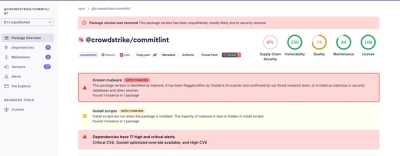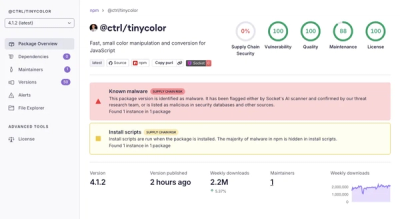If you just want to use this package, then you don't have to build it. Instead, just grab the prebuilt package from NPM:
npm install angular2-aspnet
The rest of this file is notes for anyone contributing to this package itself.
## How to build
Run the following:
npm install
npm run prepublish
Requirements:
- Node, NPM
tsc installed globally (via npm install -g typescript)
Project structure
This package is intended to be consumable both on the server in Node.js, and on the client. Also, it's written in TypeScript,
which neither of those environments knows natively, but the TypeScript type definitions need to get delivered with the package
so that developers get a good IDE experience when consuming it.
The build process is therefore:
-
Compile the TypeScript to produce the development-time (.d.ts) and server-side (.js) artifacts
tsc reads tsconfig.json and is instructed to compile all the .ts files in src/. It produces a corresponding
structure of .js and .d.ts files in dist/.
When a developer consumes the resulting package (via npm install angular2-aspnet),
- No additional copy of
angular2 will be installed, because this package's dependency on it is declared as a
peerDependency. This means it will work with whatever (compatible) version of angular2 is already installed.
- At runtime inside Node.js, the
main configuration in package.json means the developer can use a standard
import statement to consume this package (i.e., import * from 'angular2-aspnet'; in either JS or TS files).
- At development time inside an IDE such as Visual Studio Code, the
typings configuration in package.json means
the IDE will use the corresponding .d.ts file as type metadata for the variable imported that way.
-
Use the SystemJS builder to produce the client-side artifacts
build.js uses the SystemJS Builder API to combine files in dist/ into .js files ready for use in client-side
SystemJS environments, and puts them in bundles/. The bundle files contain System.register calls so that any
other part of your client-side code that tries to import angular2-aspnet via SystemJS will get that module at runtime.
To make it work in an application:
- Set up some build step that copies your chosen bundle file from
bundles/ to some location where it will
be served to the client
- Below your
<script> tag that loads SystemJS itself, and above the <script> tag that makes the first call to
System.import, have a <script> tag that loads the desired angular2-aspnet.js bundle file
For an example, see https://github.com/aspnet/NodeServices/tree/master/samples/angular/MusicStore
Of course, you can also bundle the angular2-aspnet.js file into a larger SystemJS bundle if you want to combine
it with the rest of the code in your application.
Currently, this build system does not attempt to send sourcemaps of the original TypeScript to the client. This
could be added if a strong need emerges.



